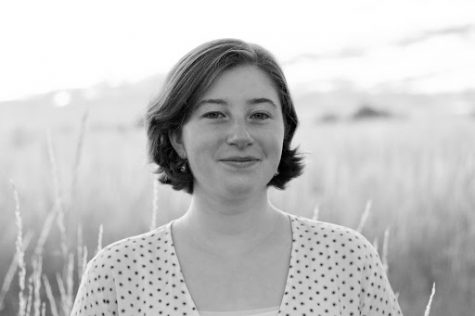The gun violence solution you’ve never heard of
Every time I hear about a mass shooting, there’s a phrase that repeats itself over and over and over: people who noticed the shooter’s warning signs attempted to report their concern, but found limited or no success. Then the media attention fades and chillingly, the reporters move on to their next story.
Last week I sat through the LOHS homecoming assembly with about 1200 other students. Midway through the speeches and videos, I looked down and realized that my arms were sore from clinging my backpack to my chest. And when I thought about the situation some more–that we were trapped in a dark gym with nowhere to hide–I was overcome with genuine fear. Could I use my backpack as defense? Were my textbooks dense enough to slow a bullet? Screw the no-phones-in-assemblies policy; if a shooter showed up, I’d need to frantically call the police and then quickly text my parents goodbye. This is one of many moments when I’ve felt helpless, completely exposed. Maybe you can relate.
Usually, this is where the conversation ends: we’re scared and don’t know how to stop shootings. At the same time, the media is failing to cover solutions, since it’s solely focused on sensational tragedy. That’s why I’m writing: there is something we can use to prevent gun violence. It’s called the ERPO.
Beyond selective news coverage of gun violence, states have spent years quietly constructing the ERPO (Extreme Risk Protection Order), which is a kind of Extreme Risk Law (ERL). ERLs sound complicated, but they’re very simple: they help ordinary people like you and me to save lives by identifying people who exhibit risk of hurting themselves or others.
ERLs allow immediate family, household members, and law enforcement to ask a local court to temporarily remove guns from people who are at-risk, but not otherwise prohibited from having them. At-risk individuals can also be prevented from purchasing guns. ERLs exist in 17 states and the District of Columbia, and most allow families, household members and law enforcement officers to petition courts. Some states allow other people to petition: New York extends jurisdiction to school administrators, and Hawaii allows medical professionals and coworkers to report, too.
As a student, I know how important this law is to keep our schools safe. Under an ERPO, we may not be able to report classmates, but certain adults like parents and school administrators can. If we can establish strong and transparent relationships with those adults, we can keep each other protected.
Here’s what the process looks like: the family member (or law enforcement on behalf of a family member) petitions a civil court, which will hold an “ex-parte” hearing with the petitioner (“ex-parte” is a legal term for “without a party,” and means that the at-risk individual is temporarily excluded.) The court hears the petitioner’s testimony and evaluates factors like the at-risk person’s behavior with guns, substance abuse and history of violence. If the risk of harm is convincing, the judge will issue an “ex-parte” order, which calls on law enforcement to temporarily remove guns from the individual and temporarily prohibit them from buying guns.
The respondent has the right to due process, and the court will hold a second hearing them to respond and present their side of the case. The judge can reverse their previous decision, or if it stands, they will submit a final order, which can extend firearm prohibition up to one year. Those final orders can be renewed, or terminated early, if convincing evidence is provided.
The ERPO is a thorough process, and with good reason. If reporting were too easy, that might tempt people to harass others. That being said, there are legal consequences for abusing the law.
Recently, a teenage boy was arrested for using his Minecraft profile to express plans to bring a gun into his school. Some people believe that the police were being unreasonable by arresting him; in the video of the student’s arrest, his mother was particularly adamant that he was not ill-intentioned. But it is important to understand that the law must be applied consistently, and so age should not automatically discount intention.
These laws are proven to be effective in preventing suicides and homicides. In analyzing Connecticut’s Risk Protection Order from 1999 to 2013, researchers found that in over half of its cases, law enforcement was propelled to transport at-risk individuals to a hospital emergency department. (This is why gun violence is addressed as a public health issue.)
ERLs are gaining substantial support: 90 percent of non-gun owners and 75 percent of gun owners back ERPO, according to a Johns Hopkins study. And seven of the past 16 ERLs have been passed by divided state governments.
One reason for this is the fairness of the system. Gun restrictions are temporary, and courts ensure due process by requiring warrant and notification of the at-risk individual. The laws also include protections against false allegations, and people who attempt to report others as a form of harassment face serious consequences. When ERLs in Connecticut and Indiana were challenged, the respective courts affirmed them, concluding that states may restrict access to firearms from dangerous people “if it is in the interest of public safety or an individual’s welfare.”
I’d like to encourage you, dear reader, to stick to your gut. If something seems wrong–whether that be a social media post, a text, a conversation–don’t feel daunted by the ERPO process. Remember that it is wholly meant for protection.
These laws are not an all-encompassing solution, but they represent a vital step in reducing gun violence. No matter our age, identity, or background, we all share a responsibility to keep our families and communities safe from gun violence. This is one important way for us to look out for each other.


